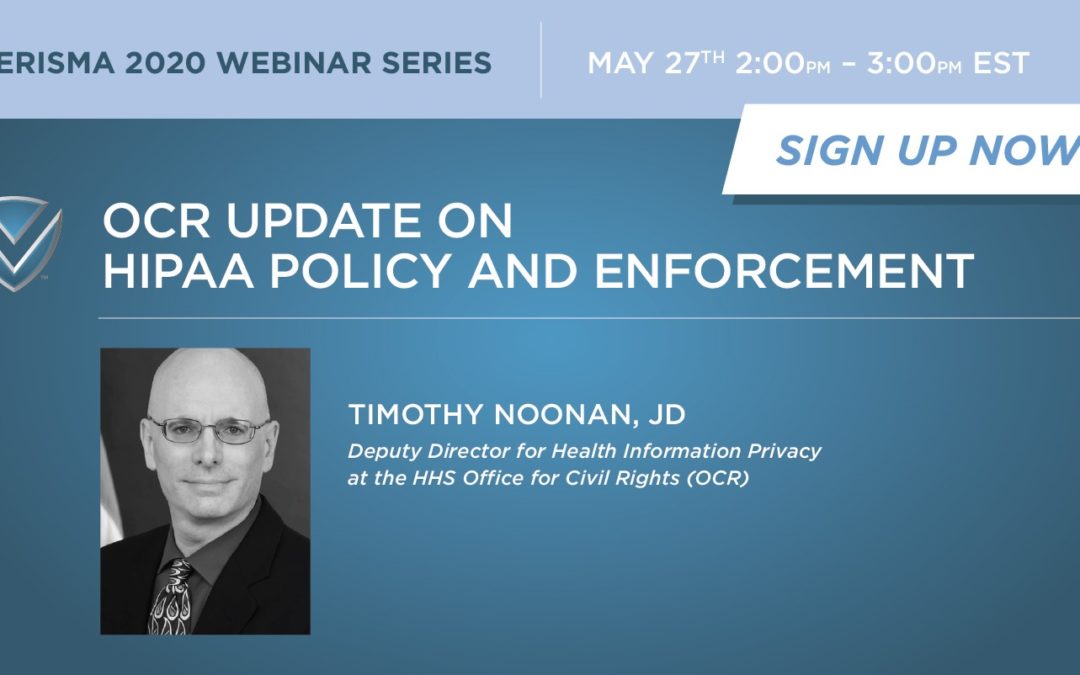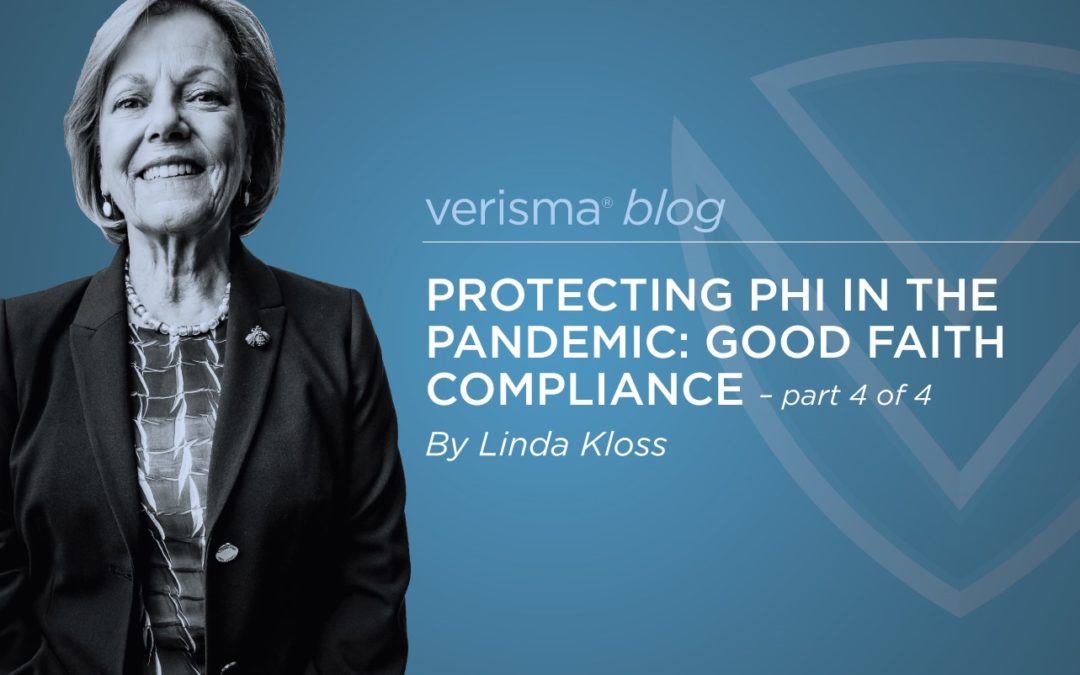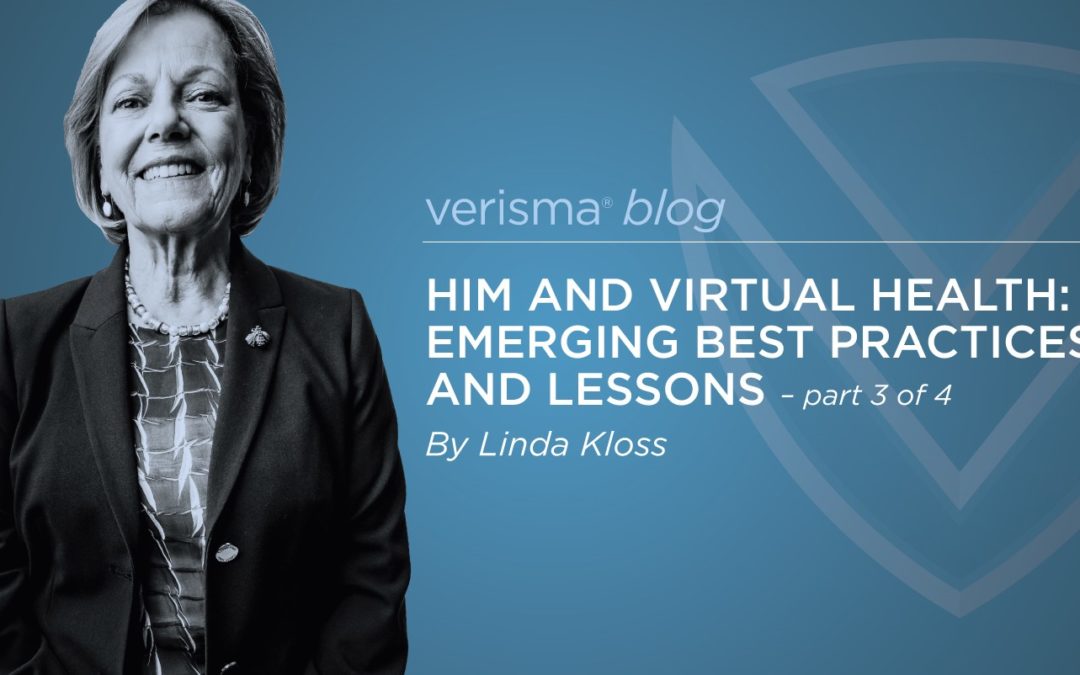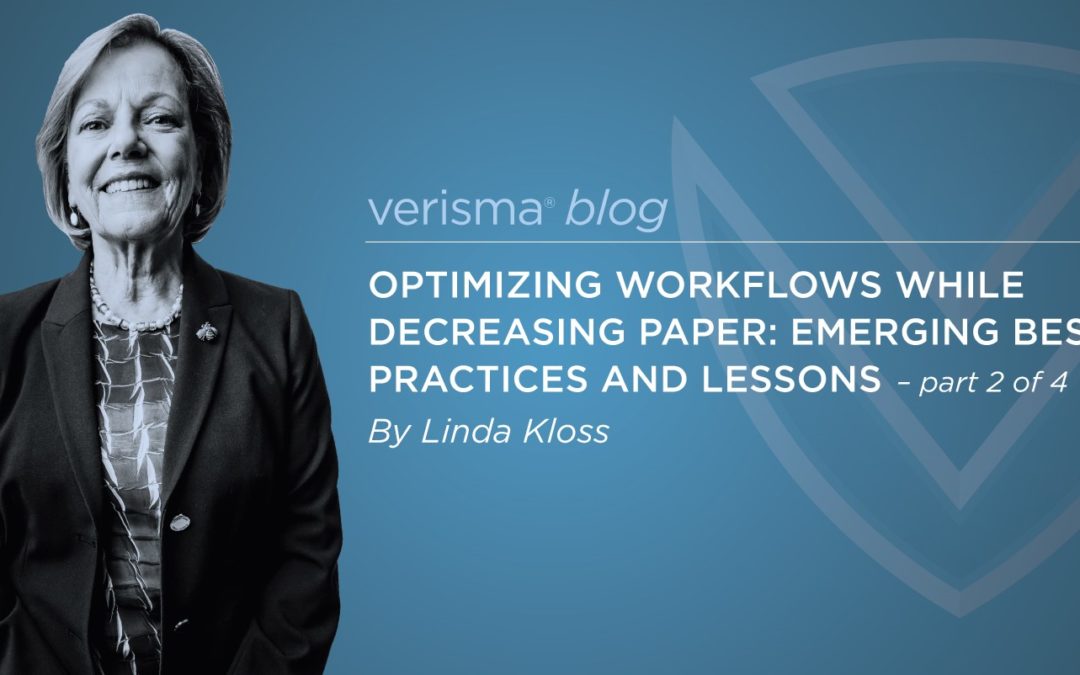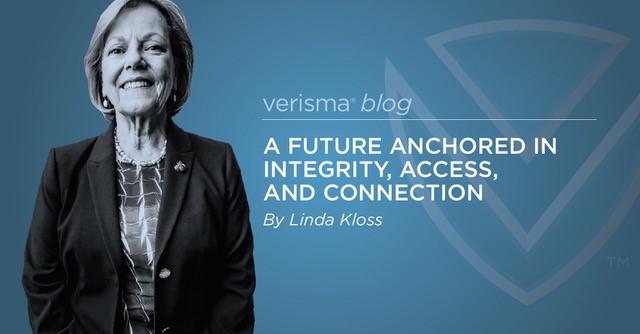
A Future Anchored in Integrity, Access, and Connection
“Health information remains a critical part of the current and future healthcare environment and is no less important in the midst of a global pandemic” stated Dr. Wylecia Wiggs Harris in opening remarks on last week’s webinar entitled Integrity, Connection, Access: A Framework for the Future. Dr. Harris, CEO of American Health Information Management Association (AHIMA), shared the principles and assumptions that shape AHIMA’s 2020-2023 Enterprise Strategic Plan via Webinar instead of delivering the keynote address at Verisma’s 4th Annual Disclosure Management Summit cancelled due to COVID-19.[i]
The Strategic Framework bridges HIM’s legacy, today’s crisis, and tomorrow’s imperatives. Dr. Harris emphasized three grounding principles undergirding the Framework: Integrity, Access, and Connection. These sustaining principles are reimagined for what Dr. Harris described as a time when AHIMA and health information professionals need to “show up as transformational leaders.” She noted that the health information professional may be more important in the pandemic and post pandemic world.
In a world where people are more engaged in their health and health care and where health is finally understood to be broader medical services, Dr. Harris stressed that AHIMA’s Strategy is “People-Centric “ and that health information professionals must always remember that their work is uniquely important because “Health information Is Human Information.” In fact, we have seen this play out in recent years as health information professionals proactively help people gain access to their health information in portals and health information exchanges. More recently, the use of request Apps is transforming patient access and release of information specialists are stepping into new roles of supporting innovation in access.
Dr. Harris and I discussed how the Framework’s grounding principles of Integrity, Access, and Connection might guide transformational improvement in access and disclosure management. The table shows examples of desired outcomes for some well-known areas of vulnerability and those in need of transformational change.
|
Principle |
Examples of Desired Outcomes |
|
Integrity |
· QA processes confirm that the right information is released and that there is a record for accountability.
· QA processes confirm that the release complies with minimum necessary rules and there is a record for accountability. · Authorizations are complete and valid and they are convenient to execute. |
|
Access |
· People have access to their digital health records through a secure web App with rigorous authentication.
· Paper request and release processes are replaced by smart technology. · Release of Information staff help patients and third party requestors learn to use e-tools. |
|
Connection |
· Release of information processes are standardized across health systems.
· Centralized access to “complete” record from ambulatory and acute care encounters. · Workflow technology with compliance prompts and rigorous security supports end-to-end processes. |
AHIMA’s initiatives will be guided by the Framework in the years to come. The guiding principles are also useful in anchoring needed change in access and disclosure management and in other HIM domains such as coding, revenue cycle, EHR management, privacy, data analytics.
What’s required is a commitment to achieving measurable improvement. As reported in our recent blogs about HIM leaders’ responses to COVID-19, there is currently momentum for modernizing outmoded processes and a spirit of empowerment for transformational change. Dr. Harris summed this up so well for us, “When surrounded by uncertainty, we must be crystal clear about what grounds us, what will guide our decisions, what will help us navigate our new norm.”
Once again, we congratulate Wylecia Wiggs Harris and the AHIMA Board of Directors for its compelling Vision and Framework and we thank Dr. Harris for sharing it so eloquently with the Verisma community.
[i] American Health Information Management Association. 2020-2023 Enterprise Strategic Plan.
http://bok.ahima.org/PdfView?oid=302888

